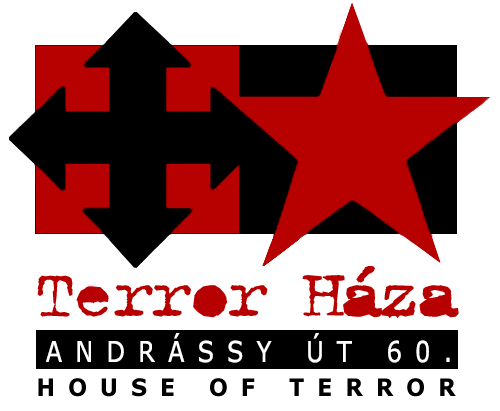On the wall we can see Ferenc Szálasi's "Report to the Nation", which he published after the putsch of October 1944. Opposite is an Arrow Cross poster, and next to it a photo showing the exhumation of the victims of the Maros Street mass murder. (Armed units of the 12th district Arrow Cross organization massacred Jewish patients and staff of the Maros-street hospital.) A frieze of Arrow Cross insignia frames the walls of the corridor, similarly to the way they were used as decorations in the "House of Loyalty".
“On 16 October I assumed power in the fullest and surest sense of victory.”
Ferenc Szálasi in 1946
In Hungary National Socialist ideas also gained followers, who chose the “arrow cross” as their symbol and called their party the Arrow Cross Party. The Nazis were their idols, and they subordinated Hungarian national interests to the Third Reich. They also copied the Nazis in the murderous race theory they used in order to designate Jews as their enemies.
The Arrow Cross did not play a decisive role in Hungary’s political life until October 1944. Like the members of the Communist Party, their leaders’ extremist views saw them repeatedly imprisoned, while their hateful and inflammatory publicity outlets were subjected to repeated bans. After the Nazi occupation the Hungarian head of state Miklós Horthy was left in office to convey the impression of continuity. But when in October 1944 Horthy asked the Soviet Union for a ceasefire, the Germans blackmailed him through the capture of his son, then took him prisoner and staged a putsch which brought the Arrow Cross to power.










